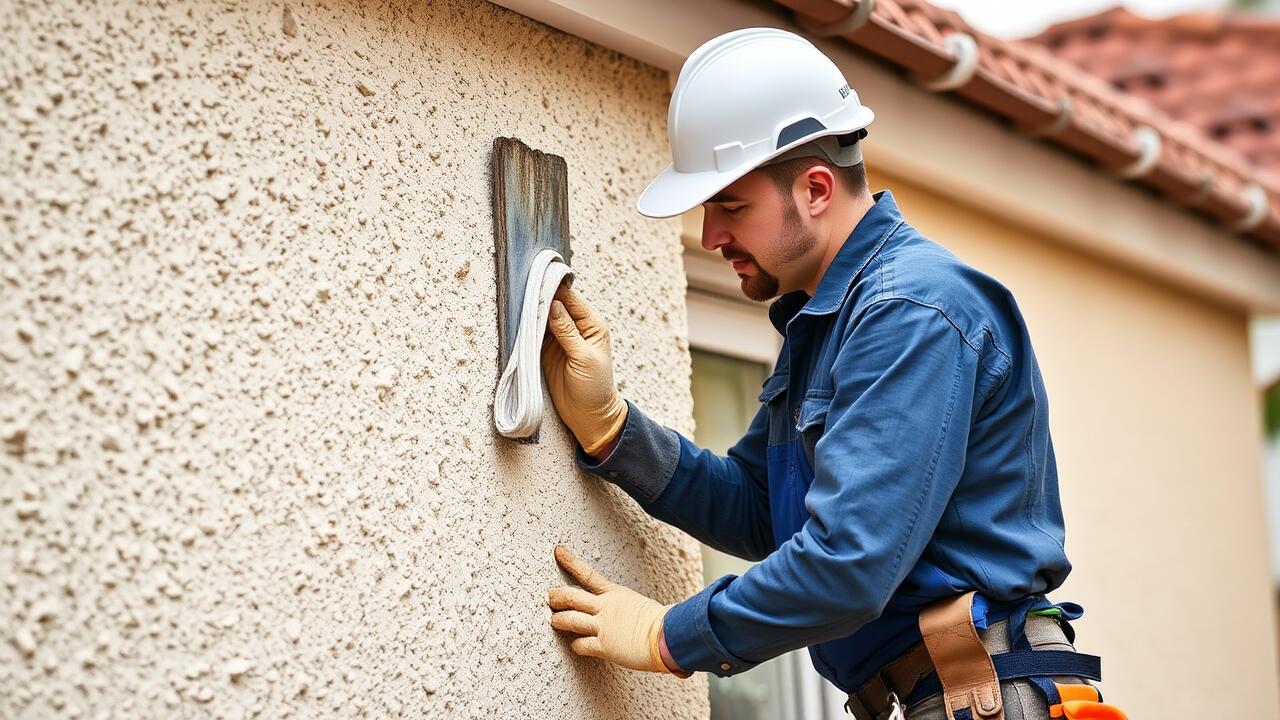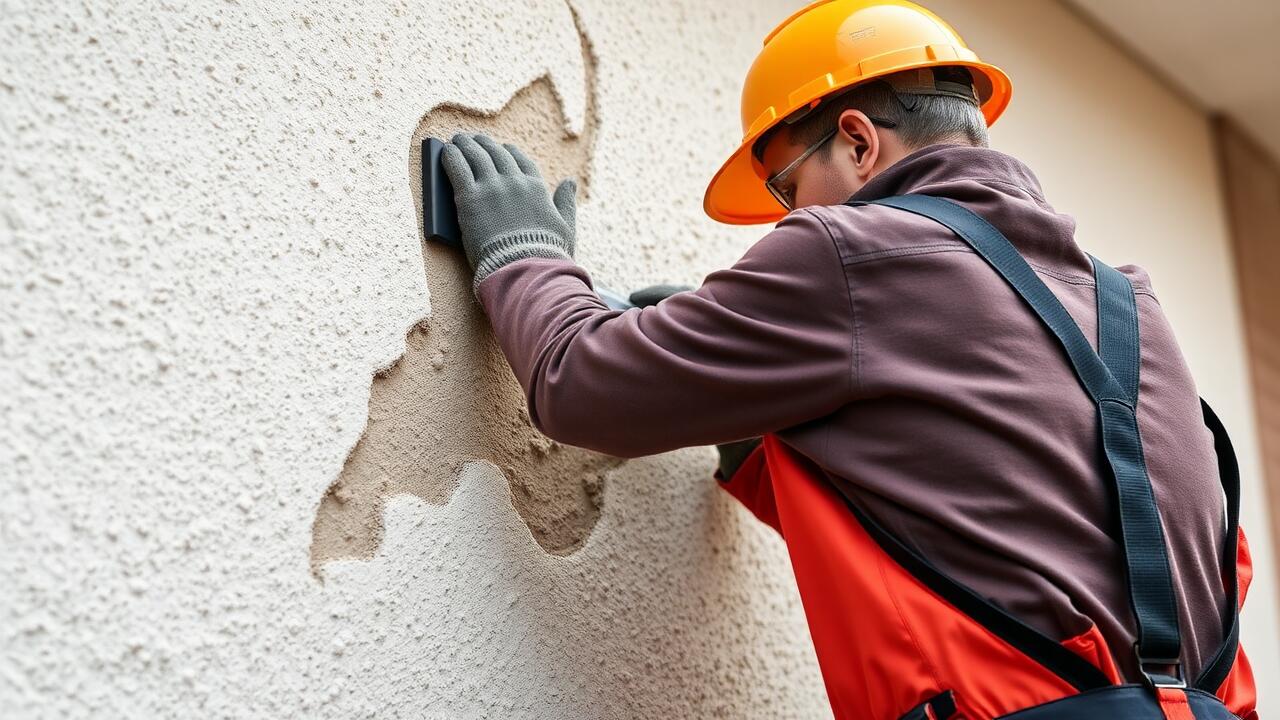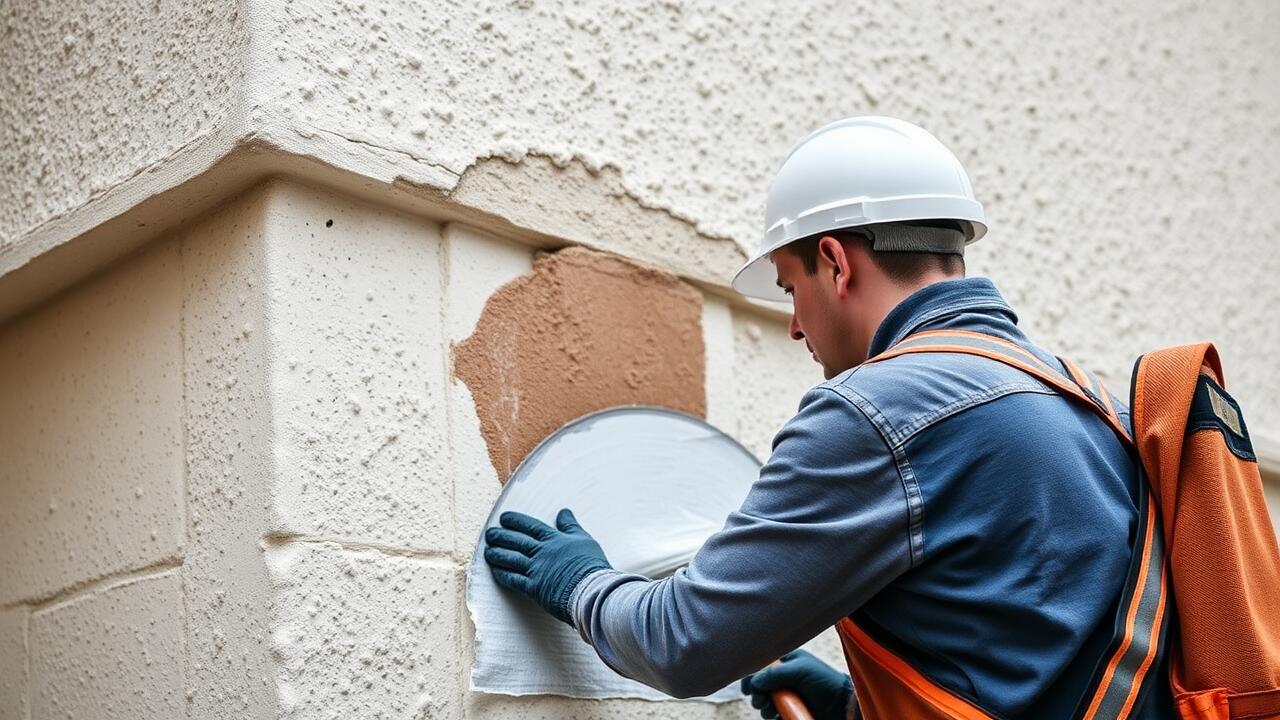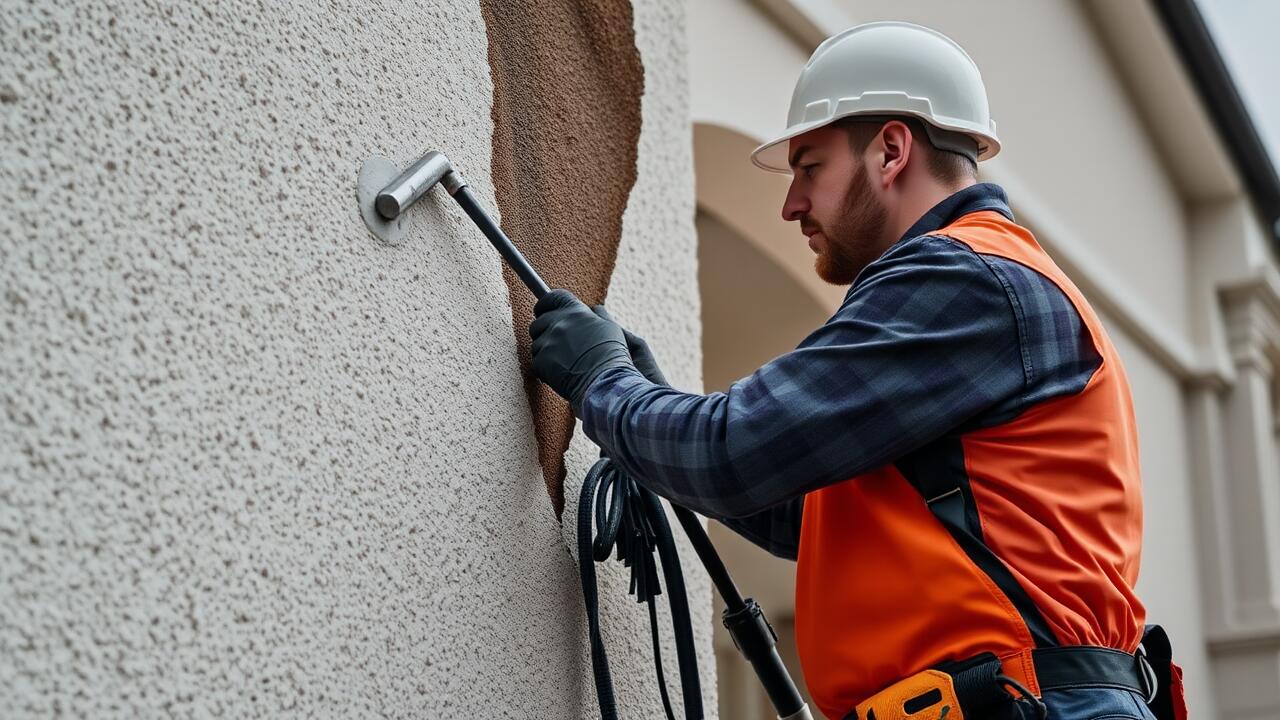
Techniques for Repairing Delamination
Repairing stucco delamination requires careful assessment of the damage before the repair process begins. Initially, the loose stucco must be identified and removed. This removal often involves cutting away the affected areas to expose the underlying structure. Cleaning the exposed surface is essential to ensure that the new stucco adheres properly. Once the area is prepared, applying a bonding agent can enhance adherence. After the bonding agent has set, a new layer of stucco is applied, ensuring it is adequately mixed and matched to the existing texture.
After the new stucco is in place, monitoring the repair is crucial. Regular checks can help identify any recurring issues early on. Homeowners should consider painting the newly repaired areas with a water-resistant sealant for added protection. Engaging with local services like Stucco Repair Westchester, Los Angeles can provide insights into professional techniques tailored for specific types of stucco damage. Following up with seasonal inspections can help maintain the integrity of the repair over time and prevent future delamination.
Methods to Address and Fix the Issue
Addressing stucco delamination involves several methods tailored to the extent of the problem. For minor issues, applying a bonding agent can help reattach the stucco to the substrate. Cleaning the affected area thoroughly ensures that the surface is suitable for bonding. After preparation, patching with a mix of stucco material specific to the original composition restores the appearance and provides a cohesive repair. If the delamination is extensive, removing the affected sections may be necessary, followed by reapplication of new stucco layers to match the existing finish.
In cases where damage is more severe, professional assistance may be warranted. Experienced contractors can assess the underlying issues contributing to delamination and implement more comprehensive repairs. For residents seeking expert services, one option is "Stucco Repair Westchester, Los Angeles," known for its specialized approach. This can involve not only fixing the visible symptoms but also addressing any moisture intrusion or ventilation issues that led to the delamination in the first place, ensuring a long-lasting solution.
Preventative Measures for Stucco
Preventing stucco delamination requires a combination of proper installation techniques and regular maintenance. Ensuring that the stucco application is performed by experienced professionals will significantly reduce the risk of future issues. When applying stucco, it is crucial to use high-quality materials and ensure adequate curing time. Additionally, maintaining proper drainage away from the stucco surface helps prevent moisture buildup, which is a major factor in delamination.
Regular inspections can help identify early signs of wear or moisture damage, allowing for timely repairs. Homeowners should also consider sealing the stucco with a water-repellent finish to provide an extra layer of protection against the elements. Engaging in preventative measures not only enhances the longevity of the stucco but also reduces the need for extensive repairs. Residents in areas like Westchester and Los Angeles can benefit from professional services by searching for "Stucco Repair Westchester, Los Angeles" to safeguard their properties against delamination issues.
Best Practices to Avoid Future Delamination
To prevent future stucco delamination, it is essential to ensure proper application techniques are followed during installation. The use of quality materials can significantly improve the lifespan of stucco. Ensure the surface is thoroughly cleaned and prepared before application. Proper curing times are also critical, as hastily applied stucco may trap moisture, leading to subsequent issues. Regular maintenance checks will help identify any weaknesses early on.
Additionally, drainage strategies should be considered when installing stucco. Properly directing water away from the structure can minimize moisture accumulation behind the stucco. Utilizing weep screeds and control joints can also provide necessary expansion and contraction space, reducing stress on the stucco surface. Homeowners might consider services like Stucco Repair Echo Park, Los Angeles, to address minor issues before they escalate into larger problems.
When to Seek Professional Help
Understanding when to seek professional help with stucco delamination is crucial for maintaining the integrity of your home. If you notice extensive cracking, bulging, or areas where the stucco has pulled away from the wall, these may be signs of significant underlying issues. DIY fixes can sometimes mask the problem temporarily, but only experienced professionals can accurately assess and address the root cause, ensuring a long-lasting solution.
The process of stucco repair requires specific skills and tools that most homeowners may not possess. Particularly in regions like Westchester, Los Angeles, where environmental factors can exacerbate stucco issues, professional expertise becomes essential. Tackling a delamination problem without adequate knowledge can lead to further complications or costly repairs down the line. Consulting with specialists will provide you with the best approach to restoring your stucco and preventing future damage.
Signs That Require Expert Intervention
Certain signs indicate that delamination has progressed beyond a DIY fix. If you notice significant cracking or large sections of the stucco pulling away from the underlying wall, it’s crucial to address these issues immediately. Bulging surfaces and moisture retention can also lead to structural concerns. Inspect your siding closely; any evidence of water damage may signal an urgent need for professional assessment.
In the Westchester area of Los Angeles, homeowners should be particularly vigilant about these signs. If you observe mold growth or a persistent musty smell, consult experts in stucco repair. Ignoring these warning signs can lead to more extensive damage and higher repair costs down the line. Seeking professional help can ensure a proper evaluation and resolution of the underlying issues.
FAQS
What is stucco delamination?
Stucco delamination occurs when the stucco layer separates from the underlying surface, leading to cracks, bulges, or peeling. This can be caused by moisture intrusion, poor application, or aging materials.
How can I identify signs of stucco delamination?
Signs of stucco delamination include visible cracks, bulging areas, water stains, or peeling paint on the stucco surface. Additionally, you may notice that the stucco feels loose or sounds hollow when tapped.
What are some effective techniques for repairing stucco delamination?
Effective techniques for repairing delamination include removing the damaged stucco layer, properly drying the underlying surface, and applying new stucco. Additionally, ensuring proper bonding with adhesives or mesh can help reinforce the repair.
What preventative measures can I take to avoid stucco delamination?
To prevent stucco delamination, ensure proper installation and maintenance of the stucco, regularly inspect for cracks or moisture issues, and apply a sealant to protect against water intrusion.
When should I consider seeking professional help for stucco delamination?
You should seek professional help if you notice extensive damage, persistent moisture problems, or if the delamination is affecting structural integrity. An expert can provide a thorough assessment and recommend appropriate repairs.



